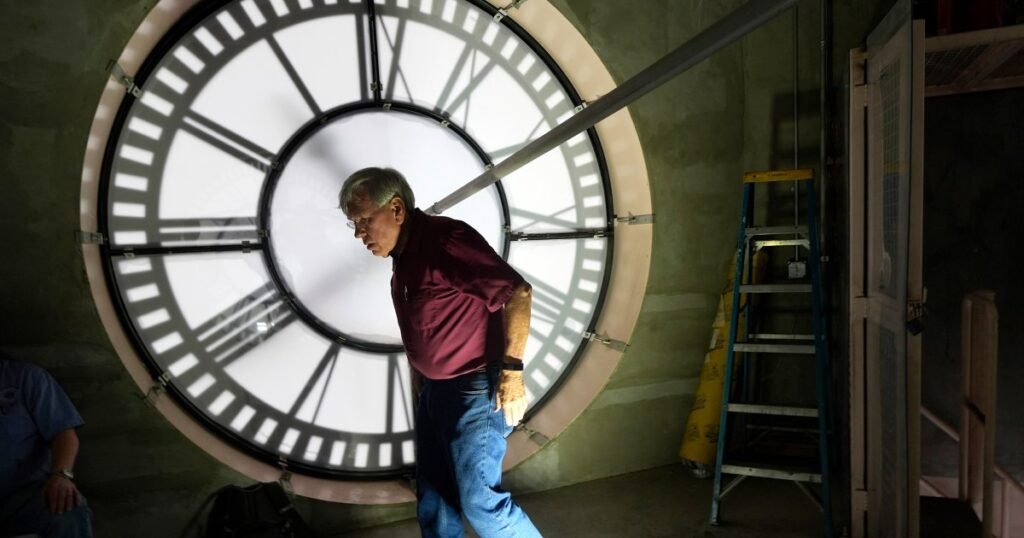Daylight saving time is here. What to know about ‘springing forward.’

After a long winter of short days, it’s finally time to spring forward.
Clocks across the U.S. will jump from 1:59 a.m. to 3 a.m. Sunday.
Here’s what you need to know about daylight saving time and why we change the clocks twice a year in the U.S.
How long will daylight saving time last?
Daylight saving time will start Sunday and last until Nov. 2. Standard time will have been in effect from Nov. 3, 2024, until Sunday.
The springtime clock change differs from the fall. Unlike the fall, when we gain an extra hour and the clocks fall back, we lose an hour in the spring.
But that turns into longer days and brighter evenings as the spring and summer months begin. It will remain in effect until we turn the clocks back to standard time, which comes back into effect on Nov. 2 as we ready for winter and usher in an era of shorter days.
Why do we change the clocks?
The U.S. has been observing daylight saving time since 1918, with the passage of the Standard Time Act, according to the U.S. Astronomical Applications Department. It was an effort to extend summertime daylight hours by pushing off sunset an hour.
Daylight saving time wasn’t totally accepted at first — it was quickly repealed in 1919, making the changing of clocks a local matter. The practice was officially reinstated during the early days of World War II and was observed from 1942-45, according to the department.
Daylight saving time varied by state until 1966 with the passage of the Uniform Time Act, which standardized dates of daylight saving time, but allowed for states and localities to opt out of the practice if they did not want to participate.
Since that act passed, the standardized dates have been changed throughout the years, according to the department.
But the dates have remained the same since 2007. Since then, daylight saving time has started on the second Sunday in March and ended on the first Sunday in November.
Are there any states that don’t observe the time change?
Yes. Residents in Hawaii and most of Arizona won’t lose an hour of sleep Sunday night. The two states do not observe daylight saving time and do not change the clocks twice a year, according to the Astronomical Applications Department.
Is anyone trying to change the practice?
The U.S. Senate passed the Sunshine Protection Act, which would make daylight saving time permanent year-round and usher out the era of changing clocks, in March 2022. Under the bill, Hawaii and most of Arizona would continue to observe year-round standard time.
But the bill stalled in the House of Representatives, so the U.S. will continue to flip the clocks twice a year until new legislation is passed in the House and Senate and then signed by the sitting president.
President Donald Trump addressed the practice this week when asked by a reporter when he is going to “get rid of” daylight saving time.
You may be interested

PGA Championship: Max Homa shows frustration in final round
new admin - May 18, 2025[ad_1] NEWYou can now listen to Fox News articles! Max Homa’s up-and-down PGA Championship at Quail Hollow in Charlotte, North…

Rubio says there “may be more coming soon” amid Afrikaner refugee resettlement controversy
new admin - May 18, 2025Secretary of State Marco Rubio defended a controversial new Trump administration policy granting refugee status to White South Africans days…

Brooklyn Bridge ship crash investigation underway today by federal, local agencies
new admin - May 18, 2025New York City and federal officials have begun their investigation into the deadly crash of a Mexican tall ship into…
































